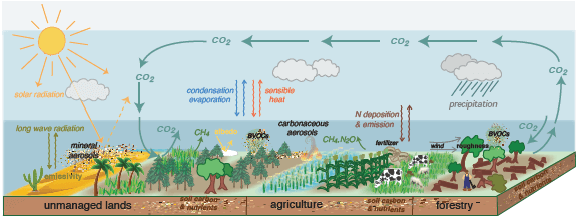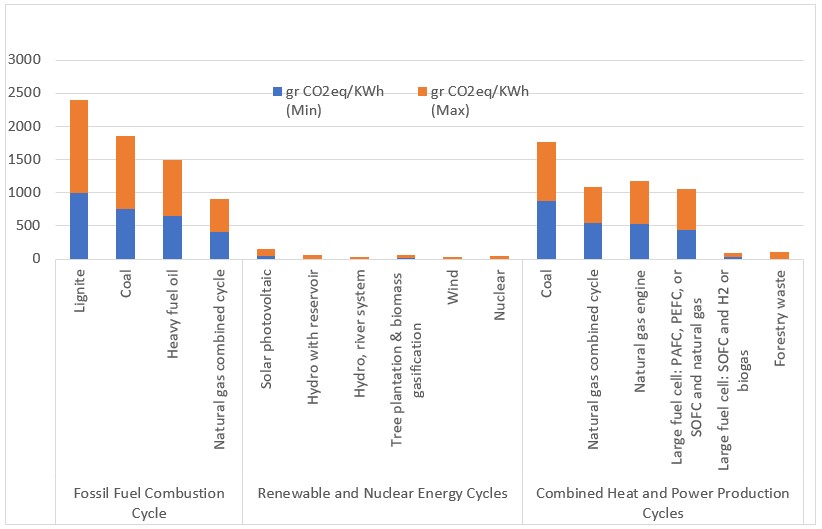Climate Change, Decarbonization, and Smart Grid
By Mehrdad Boloorchi
Historic lack of a prudent ecosystem management and rapid increase in the atmospheric concentration of CO2 after first industrial revolution and its acceleration after the second industrial revolution resulted in CO2 surplus far beyond the World biological capacity to absorb and extract. Figure 1 shows the surge in CO2 concentration especially after the second industrial revolution and within last decade.
Figure 1- Global Atmospheric Concentration of CO2 Over Time
Figure 2 illustrates the CO2 surplus in comparison with the World biocapacity in 2019. In this article, we introduce the decarbonization technologies that have been developed to reduce, absorb, and extract the CO2 surplus and improve the World biocapacity.
Figure 2- World Ecological Footprint & Biocapacity
Consequences of increasing atmospheric concentration of CO2 and greenhouse gases (GHG), which is known as global warming, is not firmly defined yet and every year we are learning more about the global warming consequences. More frequent and severe weather conditions, higher death rate, dirtier air, higher wildlife extinction rate, more acidic oceans and higher see levels are just some of the known consequences.
Decarbonization is not limited to power sector only. Figure 3 shows the share of economic sectors in CO2 emission.
Figure 3- CO2 Emission Share of Economic Sectors as of 2020 (%)
Agriculture, forestry and other land use (AFOLU) are also sources of CO2 emission while, they also remove CO2 from the atmosphere. The global net removal of emission from 2007 to 2016 is estimated to be -6.0 ± 3.7 GtCO2/yr, which consists of anthropogenic emission of about 5.2 ± 2.6 GtCO2/yr, and net non-anthropogenic removals of about 11.2 ± 2.6 GtCO2/yr. Figure 4 shows the structure and functions of ecosystem that affect local, regional, and global climate. Obviously, agricultural measures, such as reduced deforestation, shifting towards plant-based diet, and reduced food and agricultural waste can play major roles in reducing AFOLU emission.
Figure 4- Structure and Functions of Ecosystem
In this article, our focus is specifically on decarbonization in electric power sector.
DECARBONIZATION
Current Technologies
Renewable energy technologies, nuclear energy, shifting from coal to gas as an interim step, developing low-cost low-carbon energy storage technologies including the fuel cells, and effective demand management and energy efficiency improvement utilizing smart grid technologies, are measures that have been taken in power sector to restrain the rate of rise of CO2 concentration in the atmosphere.
Maximum and minimum life cycle CO2 equivalent emission for various generation cycles in power sector, which depend on power plant capacity, load factor, and efficiency, are given in Figure 5. Obviously, improving the load factor and efficiency of the power plant can play a significant role in reducing the CO2 surplus considering the differences between the maximum and minimum CO2 emission.
Figure 5- Life Cycle CO2 Equivalent Emission for Various Generation Cycles
Electrification of transportation sector is also an important measure to offset CO2 surplus. However, these technologies do not seem to be able to reverse and reduce the atmospheric concentration of CO2 in an accepted period. As shown in Figure 6, the growth of renewable energy supply sources shares in the global energy mix compared to the fossil fuels’ annual increase is very slowly and the fossil fuel consumption is increasing every year.
Figure 6- Global Primary Energy Consumption by Source
Evolving Decarbonization Technologies
International Labor Organization of the United Nations (ILO) estimates that nearly 6 million people are directly employed by the petroleum industry and over ten times that number of jobs are indirectly created by the industry.
According to market research by IBISWorld, a leading business intelligence firm, the total revenues for the oil and gas exploration and production (E&P) sector was approximately $3.3 trillion in 2019. With 2019 global GDP estimated to be $86 trillion, the oil and gas E&P sector alone makes up around 3.8% of the global economy. The average growth rate of the industry within the period of 2015-2020 was 2.4%.
IBISWorld estimated the coal mining industry size to about $698bn with about 7.3 million direct employment. The average growth rate of the industry within the period of 2015-2020 was 4,1%.
Oil and Gas industry in the United States supports 9.8 million jobs or more than 5.6 percent of total US employment, according to PricewaterhouseCopers (PwC), a coordinating entity for the global network of firms.
Regarding the above facts and considering:
- The extremely low share of the renewable energy supply sources in the global energy mix
- Low annual rate of increase of renewable energy in comparison with the increasing consumption fossil fuels
- Based on the special report of IPCC (the Intergovernmental Panel on Climate Change)
It seems that the supply of primary energy will continue to be dominated by fossil fuels until at least the middle of the century Parallel to the above efforts, new technologies have been evolved to separate CO2 from industrial and energy-related sources, transport to a storage location and long-term isolation from the atmosphere, known as carbon dioxide (CO2) capture and storage (CCS) process. The estimated capacity for this CCS is 0.4-11.3 CO2-eq/yr, however is not confirmed by detailed modeling and its socio-economic barriers are not well defined. Based on IPCC special report, utilizing CCS technology can increase the cost of electricity generation by 35-70% for natural gas combined cycle (NGCC) power plants.
Promoting transparency about the ecological footprint of products using digitalization and better information processes for developing business models and economic strategies from a sustainability perspective is another evolving technology that may have constructive impact on electricity consumption.
Decarbonization R&D
Research on converting CO2 to useful hydrocarbons and fuels through electrochemical reactions seem to be promising for decarbonizing the energy ecosystem. However no data on life cycle CO2 equivalent emission of this process and its impact on electricity generation is available.
There is ongoing research on improving the efficiency of fuel cells, especially hydrogen fuel cell, solar panels, and other renewable energy technologies.
Progress in developing pilot fusion power plants are also ongoing. Out of the many experimental fusion reactors, two of them seems to be close to making fusion a practical energy source. ITER experimental 500 MW fusion power plant in Marseille, France has been designed to prove the feasibility of fusion as a large-scale and carbon-free source of energy which produces a ten-fold return on energy (Q=10), or 500 MW of fusion power from 50 MW of input heating power. The operation of this plant is planned to be launched in December 2025. MIT ARC pilot fusion power plant is another promising project. This is a compact, high magnetic field fusion plant that is expected to produce a 4-fold return on energy and its return could be increased to 16-fold by doubling the magnetic field.
Epilogue
Impacts of intensification of atmospheric concentration of CO2 have already been observed. Permafrost degradation, coastal degradation, increased wildfire, decreased crop yields in low latitudes, decreased water availability, vegetation loss, and increased soil erosion are among them. Rapid transition in energy, land, urban, and infrastructure, including transport and buildings, and industrial systems are required to limit the global warming impacts and to reduce GHG emissions. A wide portfolio of mitigation options for different economic sector have already been studied. It seems each of the technologies described in this article shall play its role in this critical challenge facing our civilization.
Fusion power plants seem to be the major source of electricity by the end of this century with the potential to play a significant role in reducing the atmospheric concentration of CO2. Fusion does not produce GHG, pollutants like SOx or NOx, and particulates like soot. Compared to renewable energy resources like wind, solar, or biomass, it would have a very small footprint and would not compete for scarce land or water resources needed for agriculture and human habitation.
This article edited by Mehmet Cintuglu
For a downloadable copy of the January 2021 eNewsletter which includes this article, please visit the IEEE Smart Grid Resource Center.

To have the Bulletin delivered monthly to your inbox, join the IEEE Smart Grid Community.
Past Issues
To view archived articles, and issues, which deliver rich insight into the forces shaping the future of the smart grid. Older Bulletins (formerly eNewsletter) can be found here. To download full issues, visit the publications section of the IEEE Smart Grid Resource Center.




